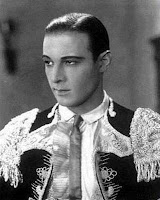Last year I watched and reviewed
over forty films made by one of my cinematic heroes, Charlie Chaplin. It’s
taken a while but after cataloguing all of his Essanay, Mutual and First National Films, I’ve come back to the tramp to look at the final portion of his
career. Even as I write these words I realise how absurd ‘final portion’ sounds
as the years I’m looking at cover over four decades and include his first
dramatic film, his first talkie and his final British films following his exile
from his adopted United States. This period also coincides with what is today,
his most iconic era; the fifteen years between 1925’s The Gold Rush and 1940’s The
Great Dictator. Despite having been one of the most famous men in the world
for over a decade, 1925 marks the beginning of the era which still defines
Chaplin’s motion picture career. It was between the years of 1925-40 that he
created some of the most essential comedy moments in film history and all but
one of his films from this period has been added to the US National Film
Registry. For me and indeed many film fans these films are gems but as with
many of the silent shorts that I reviewed last year, some of the films
surrounding this golden period will be new to me.
Most of the films listed below were produced through United Artists, the company co-founded by Chaplin and fellow stars D.W. Griffith, Mary Pickford and Douglas Fairbanks (pictured above). The company is still going strong today but lost its independence in 1967 and is now a subsidiary of MGM. I have, in the past year and a
half, reviewed some of the films on this list already but I’ll be watching the
rest in order and may decide to re-watch the ones I have seen anyway. As usual
you can click on a film’s title to read my full review.












.jpg)






















